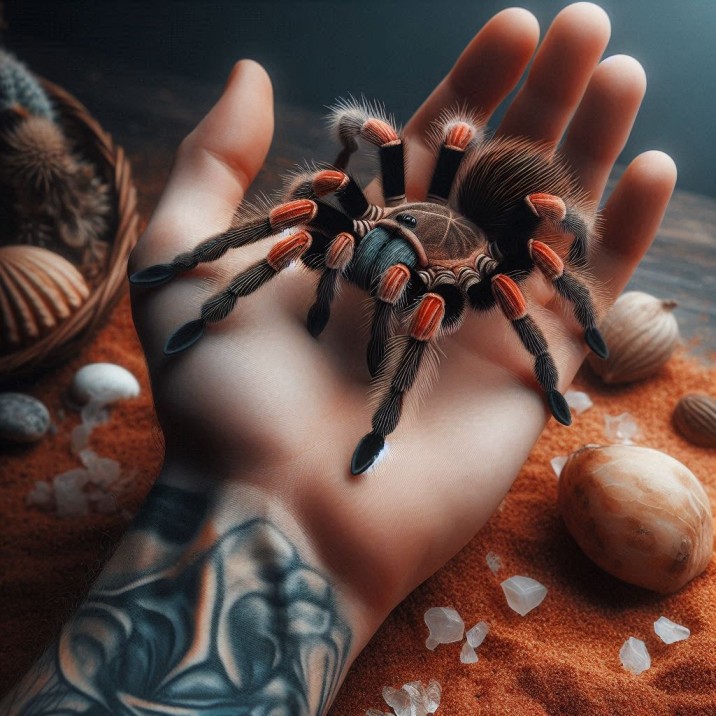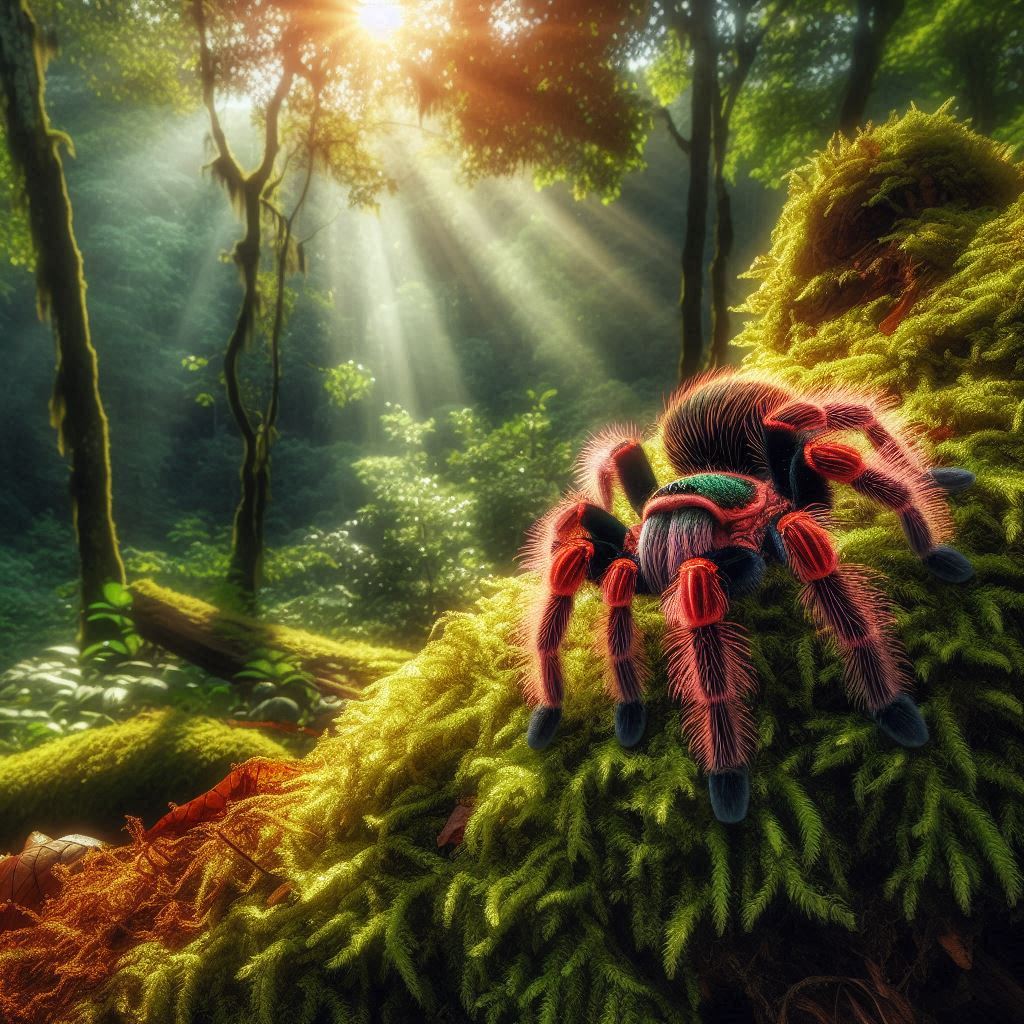Introduction
Table of Contents
The Mexican Redknee Tarantula is a captivating and popular spider known for its striking appearance and docile nature. Native to the Pacific Mountains of Mexico, these tarantulas are favored by both novice and experienced tarantula enthusiasts. In this article, we’ll explore everything there is to know about the Mexican Redknee Tarantula, including its habitat, behavior, diet, and care requirements. We’ll also address some common questions to help you better understand these remarkable arachnids.

Table of Information
| Attribute | Details |
|---|---|
| Scientific Name | Brachypelma hamorii |
| Common Name | Mexican Redknee Tarantula |
| Habitat | Dry scrublands and deserts |
| Lifespan | Females: up to 30 years, Males: 10 years |
| Diet | Insects, small vertebrates |
| Behavior | Docile, rarely aggressive |
| Size | Up to 6 inches (15 cm) |
| Conservation Status | Near Threatened |
Appearance and Physical Characteristics
Coloration and Markings
The Mexican Redknee Tarantula is easily recognizable due to its vivid coloration. The tarantula’s body is predominantly black with striking red or orange patches on its knees, giving it the name “Redknee.” This contrast of colors makes it one of the most visually appealing tarantulas.
Size and Lifespan
Mexican Redknee Tarantulas are medium to large spiders, with females growing up to 6 inches in leg span. Males are generally smaller and have shorter lifespans, living up to 10 years, while females can live up to 30 years.
Habitat and Natural Environment
Native Region
These tarantulas are native to the Pacific Mountains of Mexico. They thrive in dry, arid environments such as scrublands and deserts.
Burrowing Behavior
Mexican Redknee Tarantulas are burrowers by nature. They dig deep burrows to escape the heat and predators. These burrows also provide a safe space for molting and hunting.
Diet and Feeding Habits
Typical Diet
In the wild, Mexican Redknee Tarantulas primarily feed on insects such as crickets, grasshoppers, and beetles. Occasionally, they may consume small vertebrates like lizards and mice.
Feeding in Captivity
In captivity, their diet can consist of commercially available insects like crickets and mealworms. It’s important to provide a varied diet to ensure they receive all necessary nutrients.
Behavior and Temperament
Docile Nature
One of the reasons the Mexican Redknee Tarantula is popular among pet owners is its docile nature. They are generally calm and rarely show aggression when handled properly.
Defense Mechanisms
When threatened, these tarantulas may kick urticating hairs from their abdomen. These tiny, barbed hairs can irritate the skin and mucous membranes of potential predators.
Care Requirements
Housing
A suitable enclosure for a Mexican Redknee Tarantula should mimic its natural habitat. A 5-10 gallon tank with a secure lid, substrate for burrowing, and hiding spots is ideal.
Temperature and Humidity
Maintaining the right temperature and humidity is crucial. The temperature should be kept between 75-80°F (24-27°C) with a humidity level of around 60-70%.
Handling and Interaction
While these tarantulas are docile, they should be handled with care. It’s best to avoid frequent handling to reduce stress for the tarantula.
Conservation Status and Threats
Current Status
The Mexican Redknee Tarantula is listed as Near Threatened on the IUCN Red List due to habitat loss and over-collection for the pet trade.
Conservation Efforts
Efforts are being made to protect their natural habitats and regulate the pet trade to ensure the species’ survival in the wild.
Conclusion
The Mexican Redknee Tarantula is a fascinating and beautiful arachnid that makes a wonderful pet for those interested in keeping tarantulas. With its striking appearance and docile nature, it’s no wonder this tarantula is a favorite among enthusiasts. By providing the proper care and understanding their natural behaviors, you can enjoy the company of this incredible creature for many years.
FAQs
1. How long do Mexican Redknee Tarantulas live?
Females can live up to 30 years, while males typically live around 10 years.
2. Are Mexican Redknee Tarantulas dangerous to humans?
No, they are not dangerous to humans. Their venom is mild and poses no significant threat.
3. What should I feed my Mexican Redknee Tarantula?
Feed them a diet of crickets, mealworms, and other commercially available insects.
4. How often should I feed my tarantula?
Adult tarantulas can be fed once a week, while juveniles may need feeding more frequently.
5. Can I handle my Mexican Redknee Tarantula?
Yes, but it’s best to handle them minimally to avoid stress.

